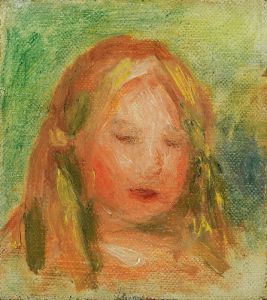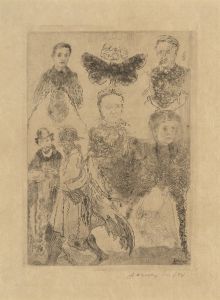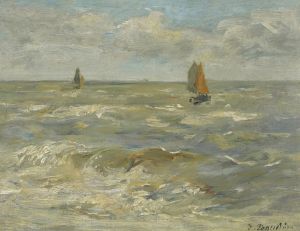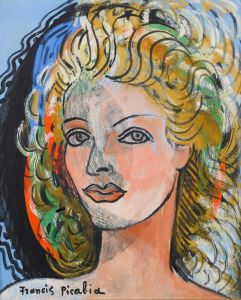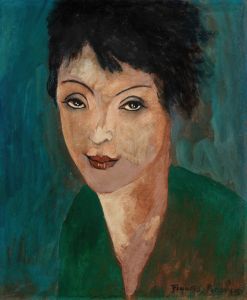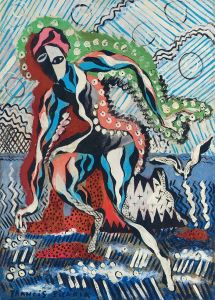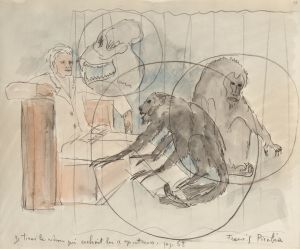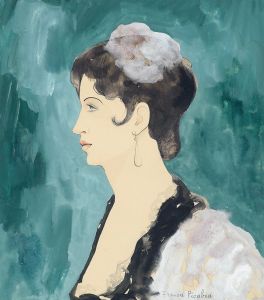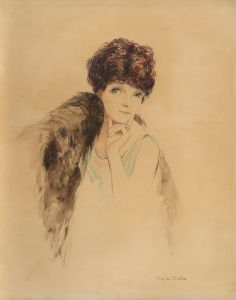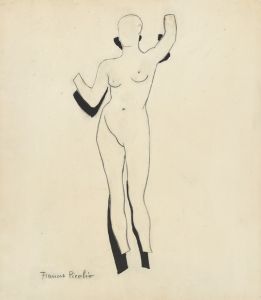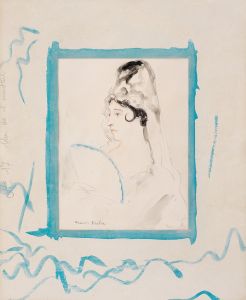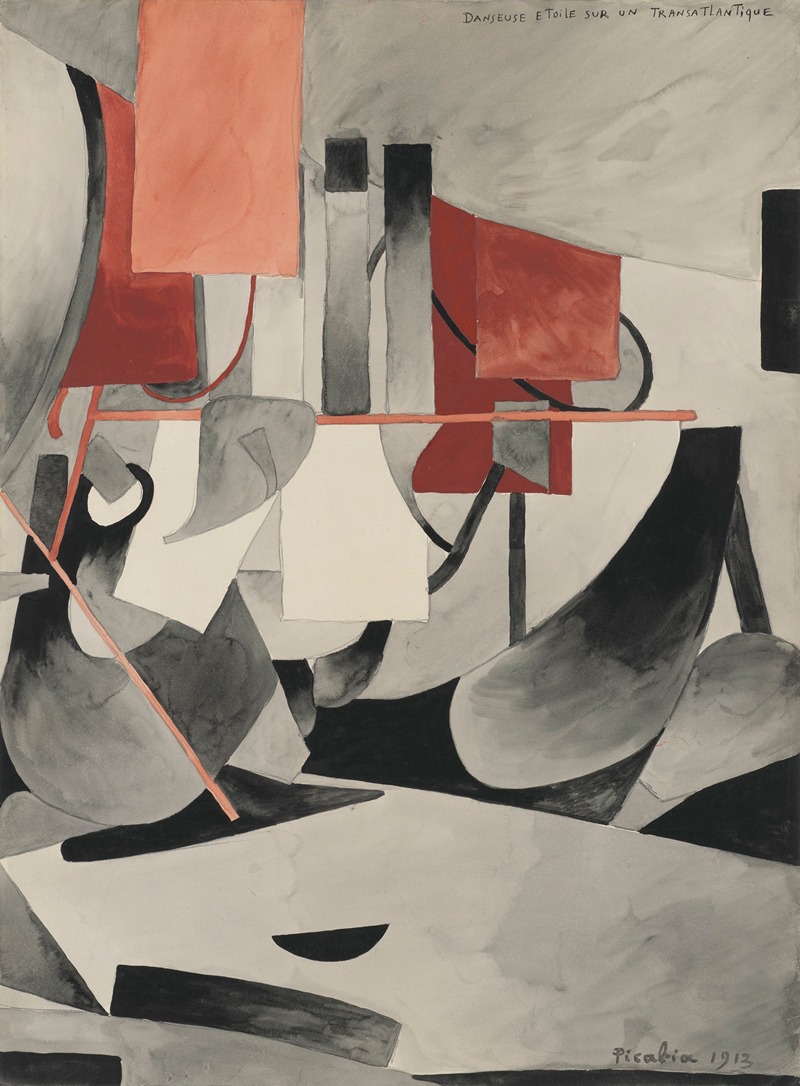
Danseuse étoile sur un transatlantique
A hand-painted replica of Francis Picabia’s masterpiece Danseuse étoile sur un transatlantique, meticulously crafted by professional artists to capture the true essence of the original. Each piece is created with museum-quality canvas and rare mineral pigments, carefully painted by experienced artists with delicate brushstrokes and rich, layered colors to perfectly recreate the texture of the original artwork. Unlike machine-printed reproductions, this hand-painted version brings the painting to life, infused with the artist’s emotions and skill in every stroke. Whether for personal collection or home decoration, it instantly elevates the artistic atmosphere of any space.
Francis Picabia, a pivotal figure in the Dada movement and an influential artist in the early 20th century, created the painting "Danseuse étoile sur un transatlantique" in 1913. This work is a notable example of Picabia's exploration of modernity and his fascination with the intersection of movement, technology, and art. The title, which translates to "Star Dancer on a Transatlantic," suggests a blend of themes related to dance and the era's burgeoning fascination with transatlantic travel, reflecting the dynamic cultural exchanges of the time.
Picabia was known for his eclectic style and his ability to traverse different artistic movements, including Impressionism, Cubism, and Dadaism. By 1913, he was deeply engaged with the avant-garde scene, and his work was characterized by a bold departure from traditional forms and subjects. "Danseuse étoile sur un transatlantique" exemplifies this period of experimentation and innovation.
The painting itself is a vibrant composition that captures the energy and movement associated with both dance and the modern machine age. Picabia often incorporated mechanical elements into his works, and this piece is no exception. The imagery in "Danseuse étoile sur un transatlantique" can be interpreted as a fusion of human and machine, a common motif in Picabia's oeuvre that reflects the artist's interest in the mechanization of society and its impact on human experience.
Picabia's work during this period was heavily influenced by his interactions with other avant-garde artists and intellectuals. He was a contemporary of Marcel Duchamp and was involved with the Dada movement, which sought to challenge conventional aesthetics and question the role of art in society. This context is crucial for understanding the innovative and often provocative nature of Picabia's art.
"Danseuse étoile sur un transatlantique" was created during a time when Picabia was actively participating in international exhibitions, including the famous Armory Show in New York in 1913, which introduced European avant-garde art to an American audience. This exposure helped to solidify Picabia's reputation as a leading figure in modern art and contributed to the dissemination of avant-garde ideas across the Atlantic.
The painting is also reflective of Picabia's interest in the concept of movement, both literal and metaphorical. The early 20th century was a time of significant technological advancements, including the development of transatlantic travel, which revolutionized the way people perceived distance and time. Picabia's work captures this sense of dynamism and the transformative power of technology.
In summary, "Danseuse étoile sur un transatlantique" is a testament to Francis Picabia's innovative spirit and his ability to capture the zeitgeist of the early 20th century. Through its vibrant composition and thematic exploration of movement and modernity, the painting remains an important work within Picabia's diverse body of art, illustrating his pivotal role in the evolution of modern art.





